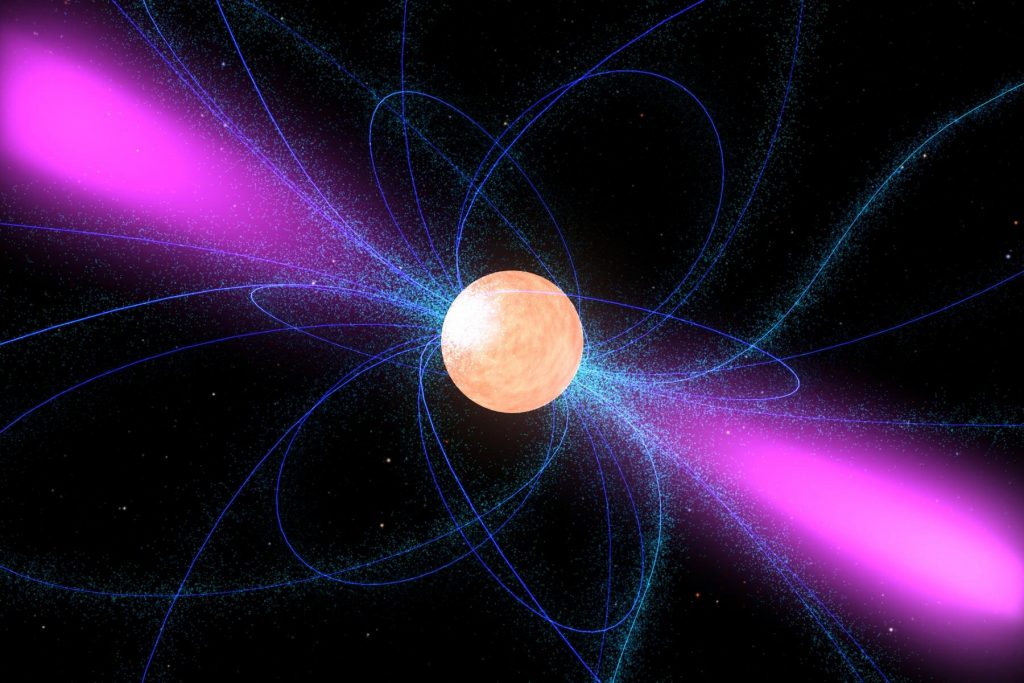In accordance with the new study published in the journal Physical Review Letters, scientists have found a way to find the components of the dark matter and the secret is in the ultra-dense matter of neutron stars.
It is a highly difficult task to detect the make of the dark matter and it might not be achievable to make such a detector while living on the earth. However, now, scientists have discovered a way to use neutron stars to work as a giant dark matter detector.
Neutron stars are the densest pieces of matter. They are created when huge stars disintegrate in a supernova explosion. The core that remains shrinks into a sphere that is attracted towards gravity so strong that the protons and electrons combine and make neutrons. In this state, a neutron star with the mass of our sun would have a roughly 6.2 miles (10 km) radius, and even a single teaspoon of the neutron star’s matter would have a mass equivalent to one billion tons.
Heir colossal size has earned them the name of “cosmic laboratories.” This equips us to see how dark matter acts when exposed to strong gravity areas that cannot be emulated on the earth. Dark matter rarely interacts with ordinary, quotidian matter, and can move through an entire light-year, which is roughly 6.2 trillion miles (10 trillion km), without losing all its velocity.
It is believed that the density of neutron stars may even let the dark matter particles get stuck in them during movement, allowing them to lose their kinetic energy.
Over a long period of time, the particles of dark matter would get collected in the core of the neutron star and then heat the star enough that we may be able to see it. In fact, if enough dark matter is collected by a neutron star, it could even trigger the collapse of the host star into a black hole.
The study basically highlights how nature can be used to detect dark matter directly using cosmic bodies already present in nature. And this method would significantly increase both the robustness and accuracy of the dark matter capture rate. This will lead to accurate calculations of the strength of the forces that dark matter particles exert on the ordinary matter among neutrons.

